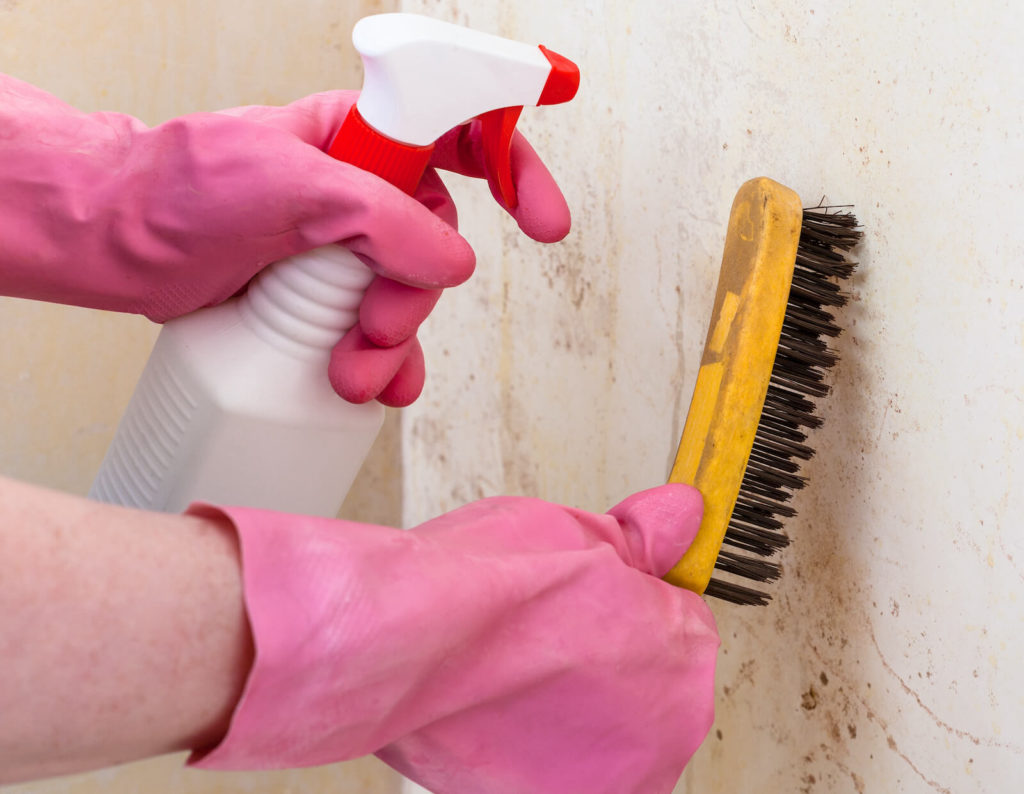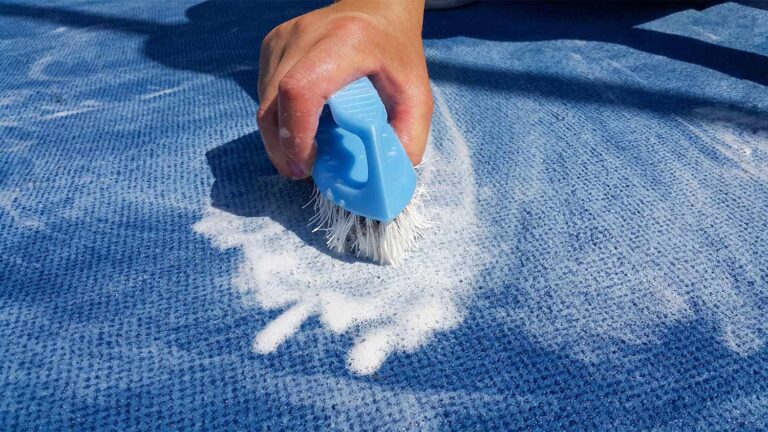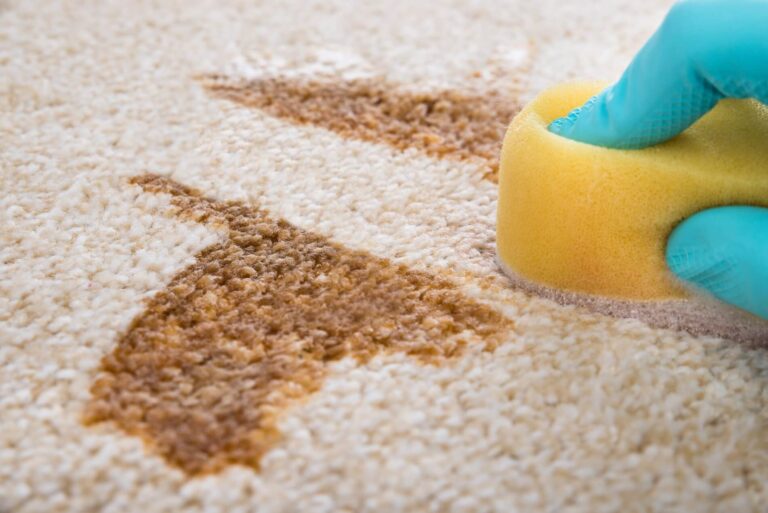Why does mould appear on walls?
Wall mould does not occur everywhere. It needs specific conditions to reproduce:
- An organic environment: indoor plants, peat pots, wood or board products, paper, concrete, stone, soil;
- Mould spores (seeds) can be introduced into any environment. They can attach themselves to human clothing anywhere;
- Stagnant air: poor ventilation, poor aeration;
- Uneven heating of the room: for example, one of the walls of a flat is heated from the outside, while inside it is not heated much.
Though we cannot prevent all fungi from growing inside our homes, we can control some variables that affect the growth of moulds. For example, keeping humidity low and maintaining good air circulation will prevent mould from sticking to walls or floors.
To combat or prevent mould, you need to take basic safety precautions, such as having good heating and constant ventilation in place.
From where the moisture comes
- Poor air circulation in the room;
- Poor sanitary conditions;
- Older utilities are often prone to leaks. In such cases, damp stains on the walls are common. They should be dried immediately and the pipes replaced.
- Walls are frozen on the outside;
- Groundwater near your house;
- Gutter leaking outside the house;
To remove mould from walls, the cause of the problem must first be identified and eliminated.
What are the dangers of mould to human health?

Moulds are interacting with humans in two ways:
- Direct skin contact;
- Ingestion.
Mould often enters the human body through contaminated food. This is a topic that deserves its own article, but, anyway: take care and be careful!
Because moulds are directly spread through spores, they float in the air for a long time. Therefore, the greatest harms are to people and pets who inhale these spores.
They are toxic!
Once inside the lungs, the seeds poison the entire body. Continuous inhalation of the fungus has been found to cause a number of diseases:
- Allergies;
- Skin diseases;
- Gastrointestinal tract diseases;
- Diseases of the upper respiratory tract;
- General malaise;
- Nausea;
- Headache;
- Kidney damage;
- Internal bleeding (in rare cases).
Children are the most vulnerable to being affected. They haven’t developed a strong enough immune response to be able to cope with the disease yet. Older people are also vulnerable.
Types of mould in our houses

Black mould
Black mould on walls is the most frequent. There are eight different species of fungi, which take on a dark colour depending on its stage of growth and the material on which it parasitizes.
Black mould is considered one of the most dangerous for human health. It is also destructive to building materials. These moulds are hard to remove because they develop quickly.
White mould
The most inoffensive. It rarely appears on the wall and usually lives in pots or vases. It has a soft texture and doesn’t crumble. It looks like a veil or film that may be easily stained.
This feature is important.
White fungus is often mistaken with white efflorescence, which is usually caused by calcium carbonate deposits on a wall. The latter crumbles easily, grows on the wall, and ruins it.
Actinomycetes
If you’re looking for a way to get rid of mould from the walls, you need to be sure that it isn’t Actinomycetes.
If you mistakenly use a dry antifungal agent on Actinomycetes, the result will be the opposite of what you intended. Using such an agent creates a humid environment that will promote germination of Actinomycetes.
How to remove moulds from walls

In order to effectively remove moulds from walls, it is important to identify the source of the mould growth and treat the underlying cause.
If you need to remove mould from a bathroom, for example in the shower stall area, you should ensure good ventilation or install additional heaters to warm the room. If you do not address these issues, it will likely return.
Step-by-step actions
- Wear protective clothing, goggles, and gloves.
- Treat the area where the fungus has spread and the entire perimeter of the room with a tolerance of one square metre.
- Apply all products twice or three times in the same area. After each subsequent application, wait until it has dried completely before applying again.
- During the work, ventilate the room intensively. For the next three days, let all latent spores on the ground rise and float in the air.
- Use a scraper or a drill with a metal nozzle to clean the growths and the surfaces they have colonised. Remove wallpaper, tiles, paint, cement, plaster—anything underneath the mould. If the material is porous, the mould has burrowed deep into it. That’s where its roots are: you must remove the entire piece of material. Otherwise, it will sprout again.
- All pieces of building material with traces of mould must be burned.
- The last step is the application of a protective agent.
How to get rid of mould with folk remedies
- Vinegar. Once a week, spray the rotten plaque with it. Leave it for an hour and then rinse it thoroughly. Repeat the operation until the fungus has completely disappeared.
- Ammoniacal alcohol. Mix the product with water in a 1:1 ratio. Spray on tiles or glass, then rinse thoroughly – it’s deadly!
- Bleach. Even the cheapest bleach is fine. Dilute with water and water the areas affected by plaque. It eliminates fungus and mould thanks to the active ingredient sodium hypochlorite. This method is considered the most effective. Do not mix ammonia and bleach. A toxic gas is produced.
- Baking soda. You can dilute a teaspoon in a glass of water, sprinkle or soak all the necessary spots and do not rinse. Baking soda is excellent because it is safe for humans and animals.
- Hydrogen peroxide. Water all affected surfaces, except fabrics and coloured painted surfaces because peroxide corrodes paint.
- Borax: mix 1 cup of borax with 4 litres of water. After it is completely dissolved, sprinkle it on the mould and rub it in. It is not necessary to rinse. If the mould is thick, a paste can be made. Just add less water to the borax. The action is the same: apply the paste, leave it for 10-15 minutes and rub, without rinsing.
Chemical Remedies for Mould
A variety of descaling products can be found in household cleaning products: sprays, gels, and solutions. The most effective products are those containing boron and boron compounds.
Carefully choose the right remedy according to the type of mould on the walls.
There are different products for various kinds of fungus: black fungus, white fungus, dry fungus, wet fungus, wood fungus, and cement fungus. If the wrong product is used on a particular kind of fungus, e.g., a product designed to treat a dry fungus is used on a wet fungus, the affected areas will become even more infected!
Read the instructions for use carefully.
If you don’t feel comfortable dealing with the issue yourself, hire a professional cleaning service. Professional cleaners will clean your house quickly, efficiently, and safely.
How to prevent wall fungus
- Ventilate the room frequently;
- Make sure that the whole room is heated evenly and that there are no frozen walls or corners;
- Regularly carry out good quality wet cleaning
- Do not allow corners or walls to be cluttered.
- Ensure that walls, floors, or ceilings do not get wet
- Dispose of rubbish and debris in a timely manner.
Can you really get rid of mould on the walls permanently? If not, what should we do?
A holistic approach is necessary to eliminate the cause of wall fungus. First eliminate the cause; then use possible remedies, followed by preventive measures. Patience is required, because it may take several weeks or months for the mould to disappear entirely.
If the mould cannot be eliminated over a long period of time, it is best to replace the part of the building that is completely infested, eliminating the previous bugs first. If this is not possible, it is better to change your place of residence because living in an affected area is dangerous for human beings and can lead to such health problems as allergies and asthma attacks.
Moving into another house will save your health and that of your children. It will save you nerves, time, and money. Above all, it will give you the opportunity to live happily in comfortable conditions.


